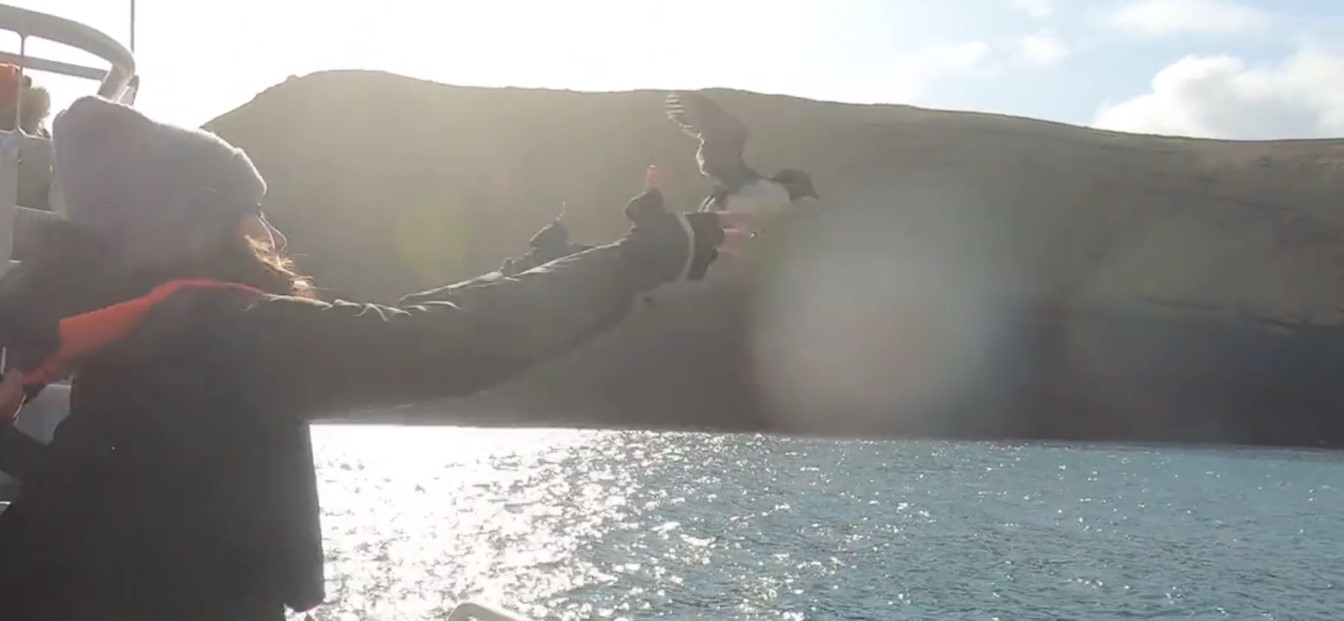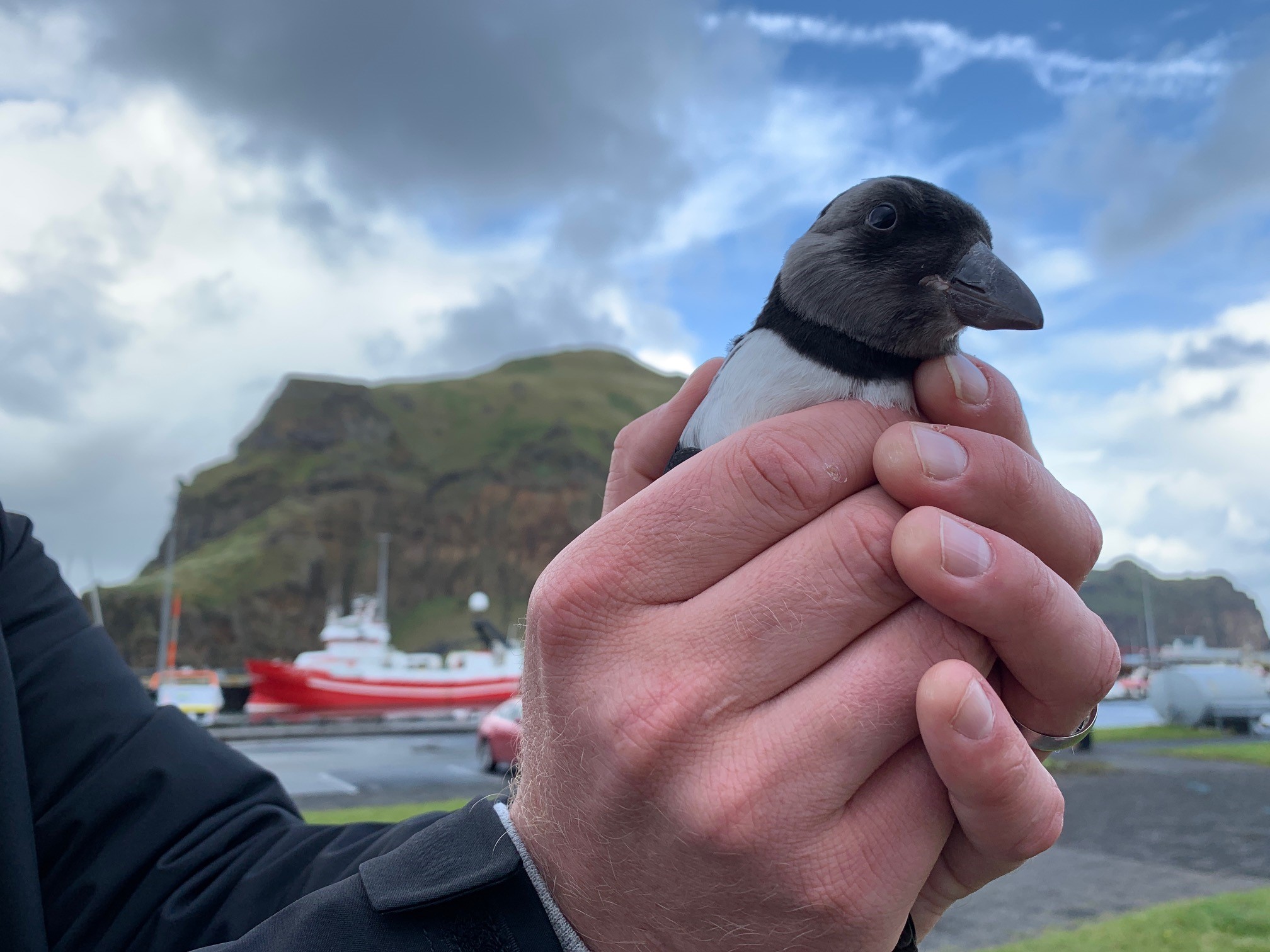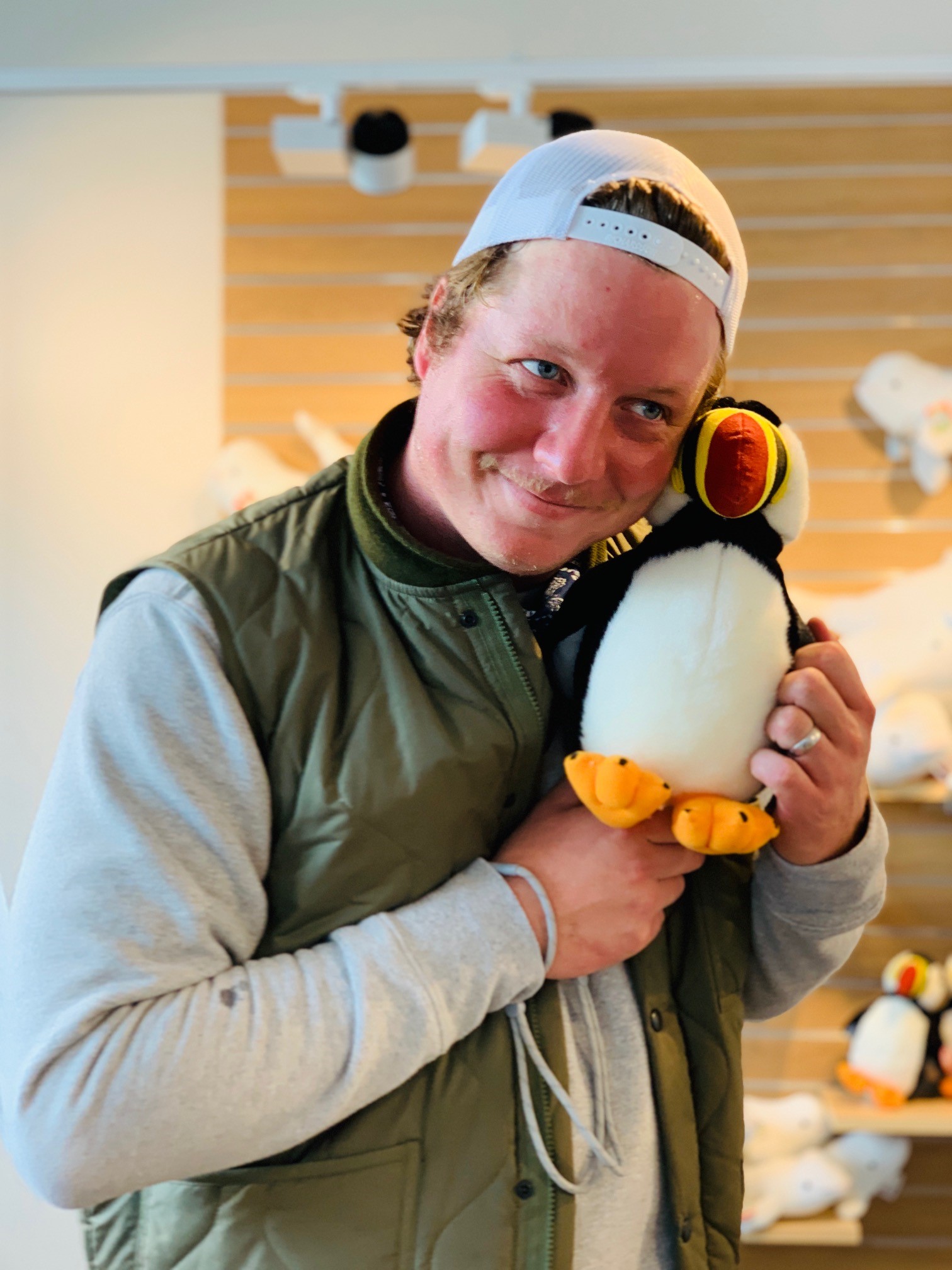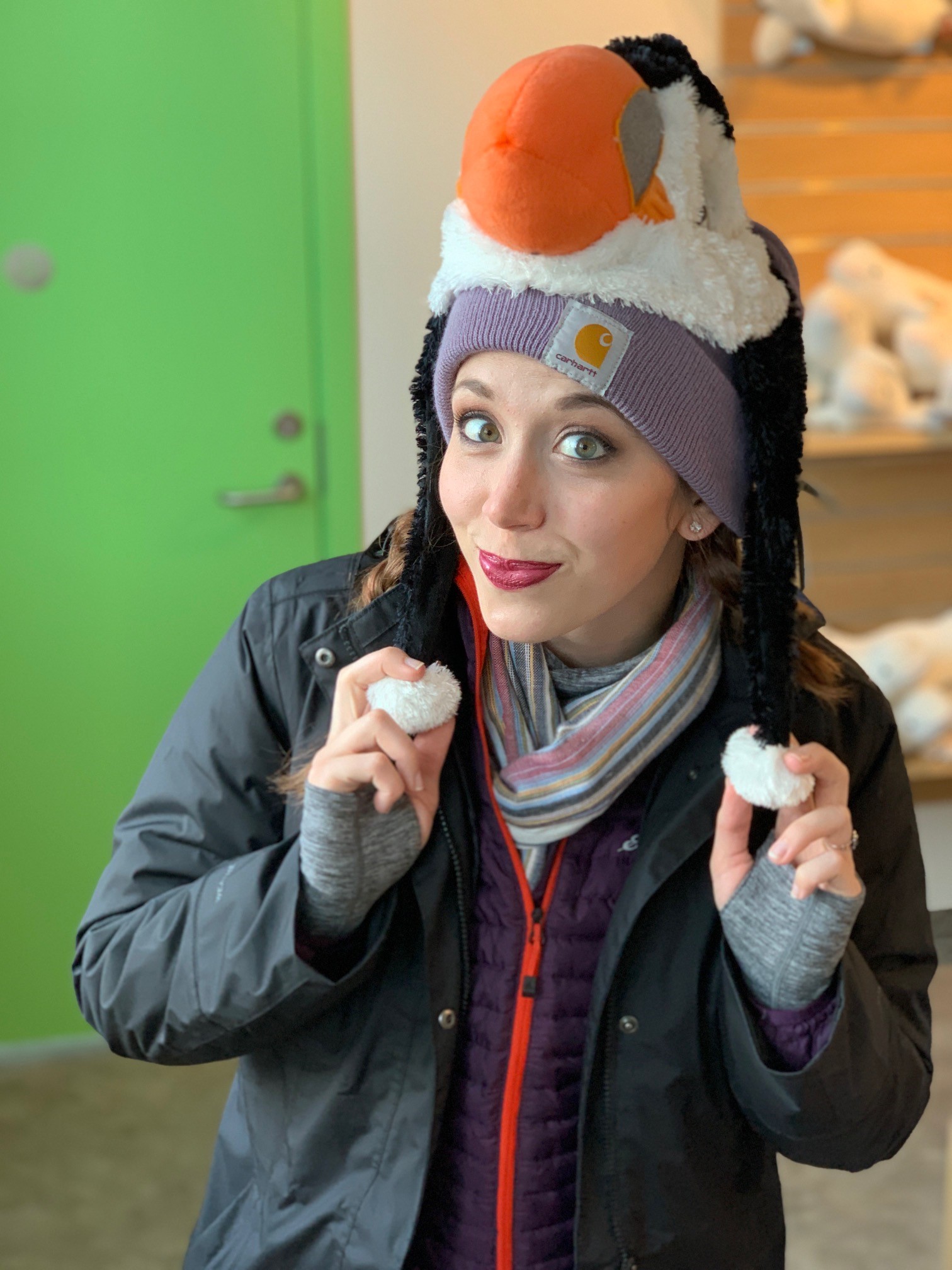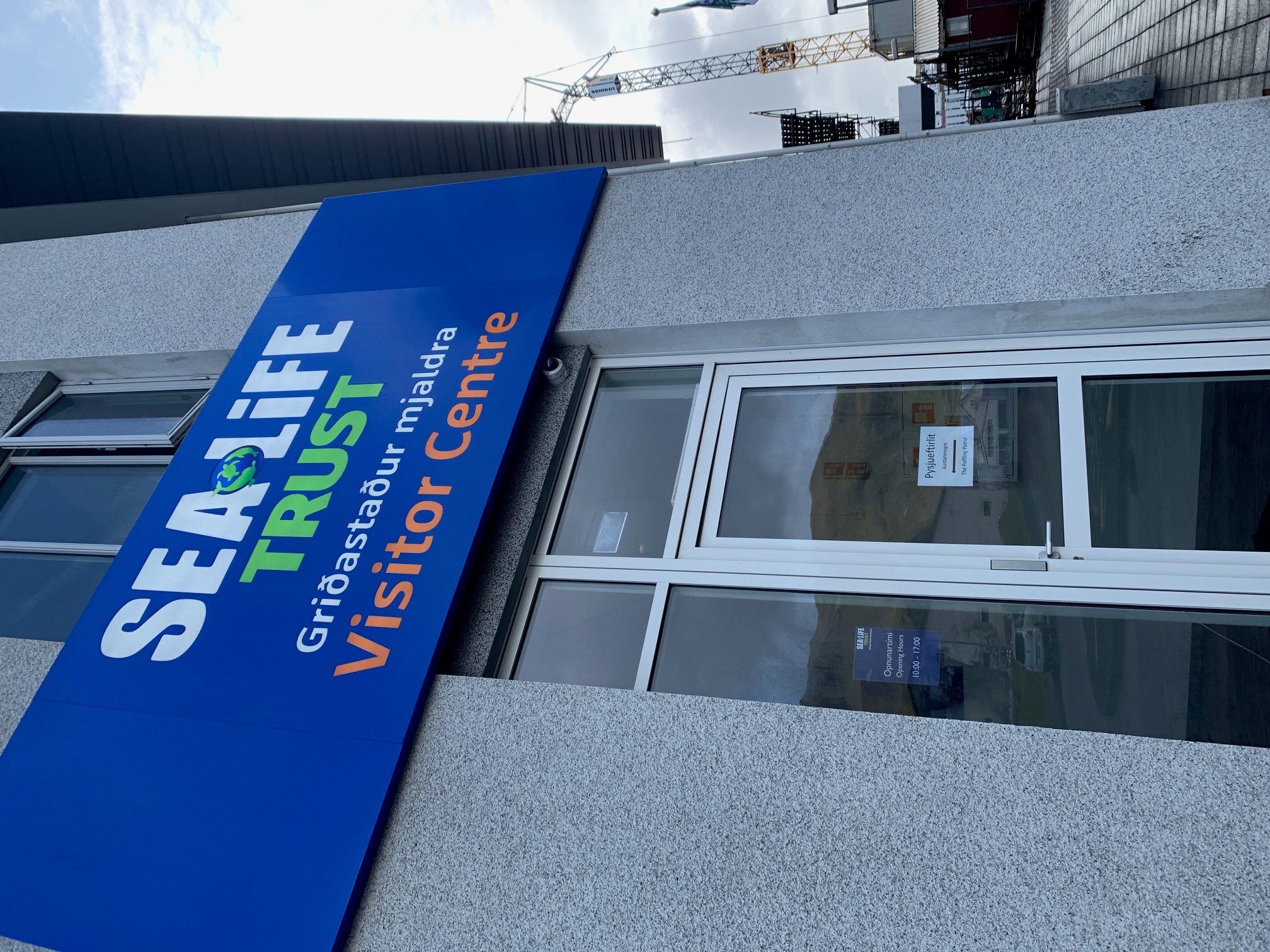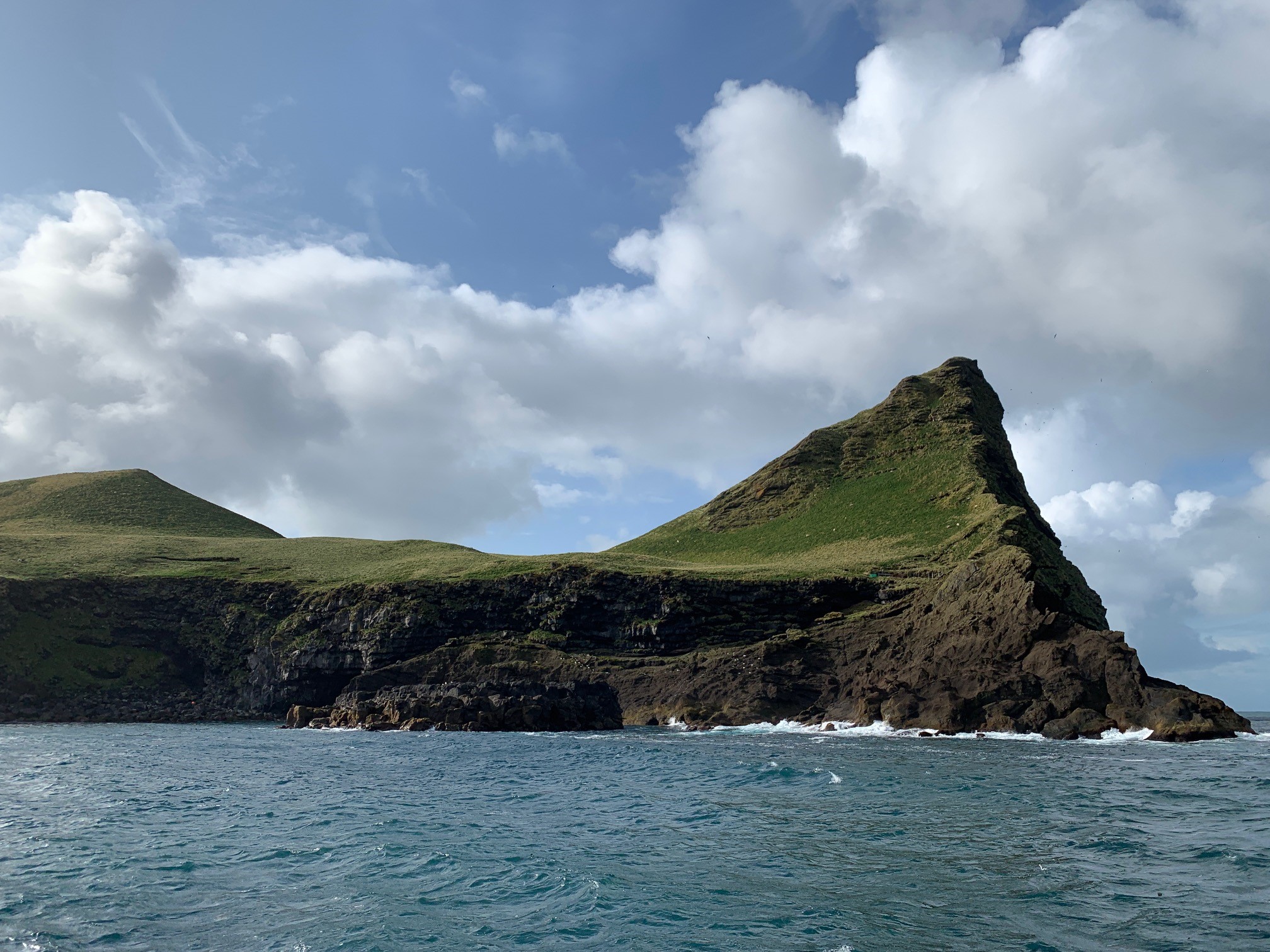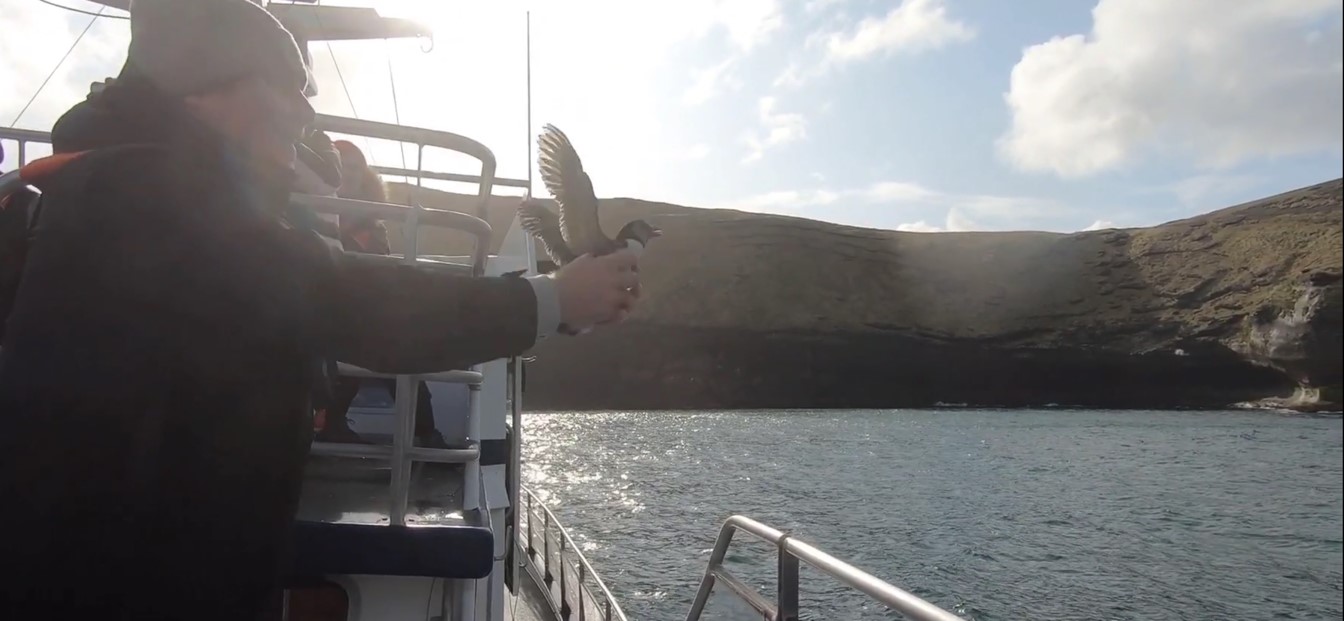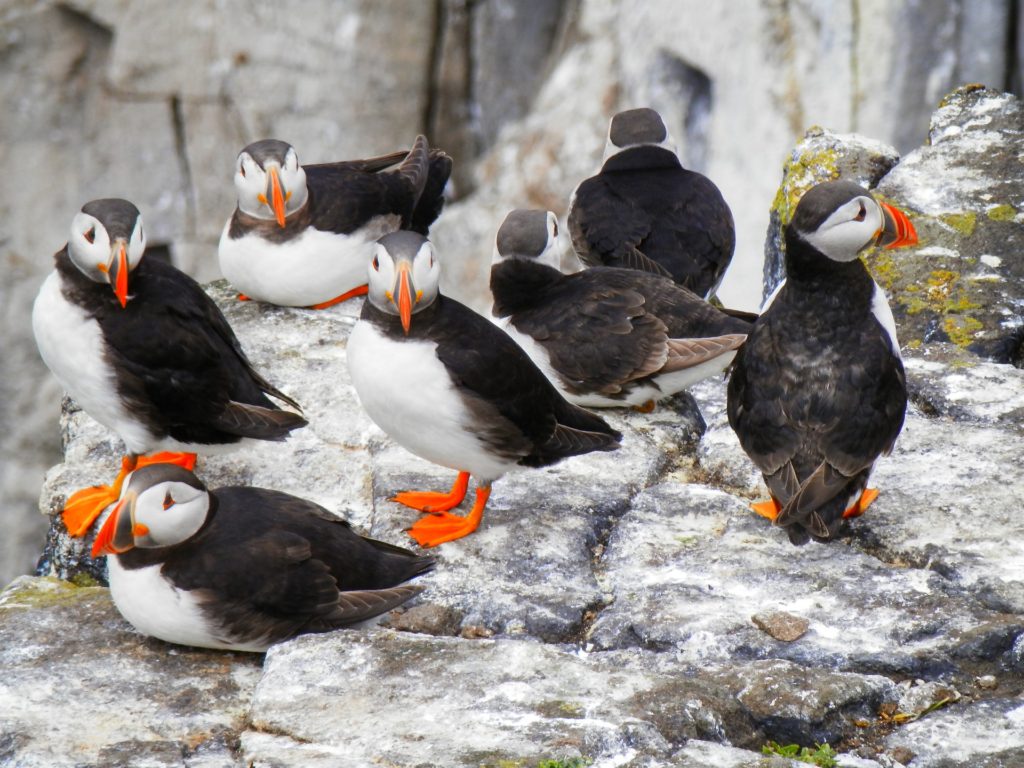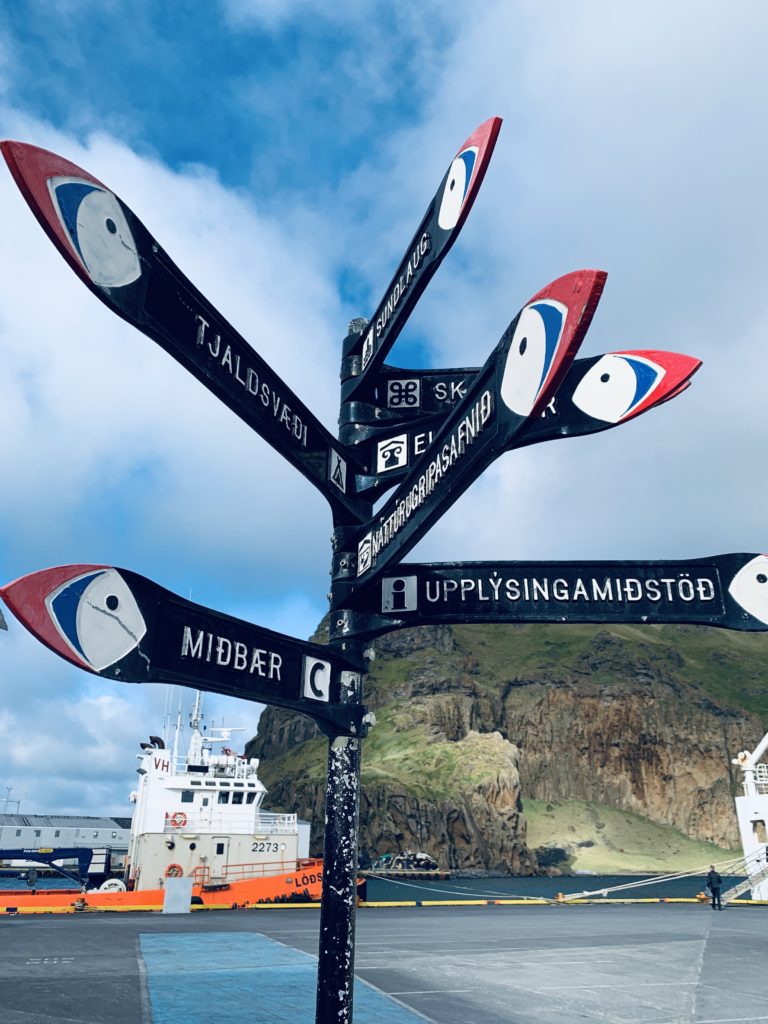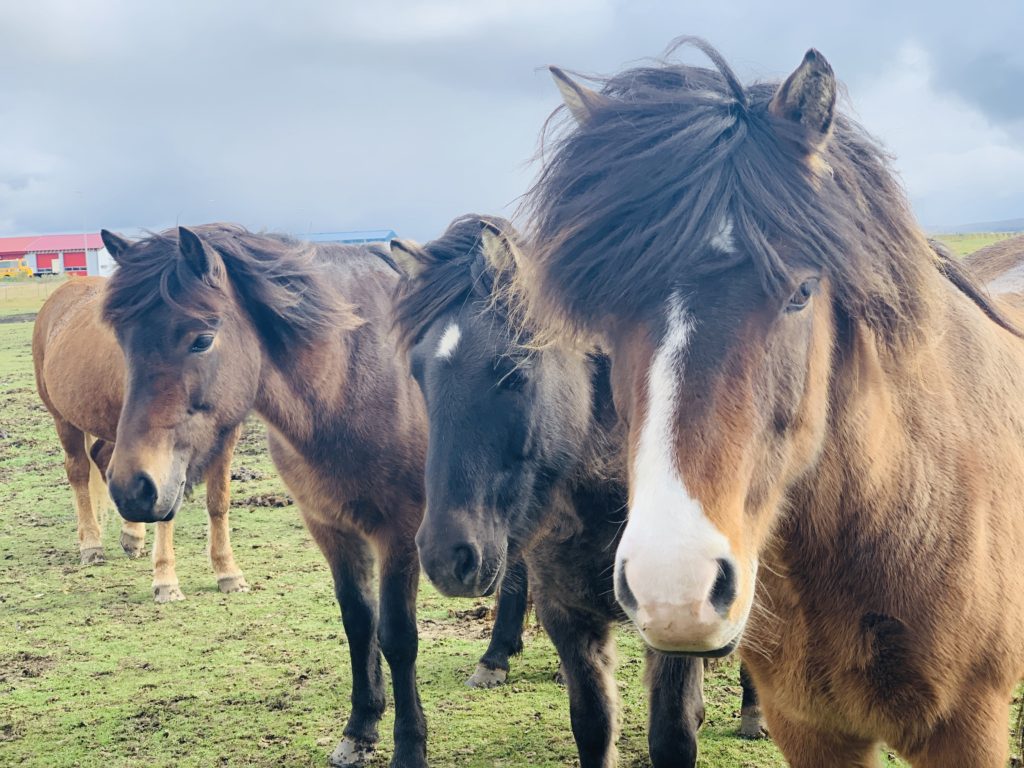Rescuing and releasing puffins? Before Iceland, I would have looked at you with a bewildered face.
In the United States of America, catching wild animals is looked down upon. Good luck avoiding a shameful look if people know you are keeping baby animals overnight — especially if they are endangered.
But here in Iceland, things are different. Icelanders trust people, and that connection to and respect for nature exists strongly among everyone. This is their land, their wildlife, and their pride.
After all, where else in the world can you freely — and encouragingly! — rescue baby birds (like puffins!) with your own hands and set them free to go on and live successful lives without harming their futures?
Obviously: in the Westman Islands in Iceland!
Iceland’s Connection With Nature (And Puffins)
Here, doing what’s right isn’t controversial. It’s a part of life. Helping nature out (specifically rescuing baby puffins — aka pufflings — during Puffling Patrol) is something that’s been handed down for generations. It’s a way of connecting with the land that sustained your ancestors for hundreds of years. In fact, in the last few years alone, they’ve rescued more than 6,000+ pufflings through the Sea Life Center.
Here’s the magical place you go to “check in” your rescued pufflings. They get weighed, a health exam, and more before giving you the green light to set them free. The staff here are incredibly nice! (Plus, we had fun posing with all the puffin stuffed animals…)
How To Catch And Release Baby Puffins
To read more about rescuing baby pufflings after the mating season, you can click here. But this post is about what to do AFTER that — it’s about their release.
After you’ve caught these small, helpless sea birds wandering the streets of Haimaey, give them shelter in a box overnight. (You can get a free cardboard box from any local business on the island.) Then take your baby puffins to the Sea Life Rescue Center by the harbor where they will be examined to ensure they are healthy, weighed, and marked ready for release.
They will tell you the best place for releasing the puffins, or — if you’re like us and had a boat tour around the islands scheduled that afternoon — you can release them at sea. (Trust us, the tour guides don’t mind one bit and encourage it.)
Step By Step Instructions For Releasing Your Puffin
When releasing your puffin, our guide instructed us as such: hold your puffling firmly with both hands, thumbs on his/her back and fingers wrapped around the breast. Make sure the wings are above your fingers and are free to flap.
You’ll swing the puffling into the air three times, the first two being so the bird can get the feel for air under his/her wings and prepare for the toss. On the third swing upward, toss the puffling as high as you can so it can get as much air under its wings as possible — giving it a better chance at learning how to flap and catch the draft to fly.
Don’t be discouraged if your puffling doesn’t fly; apparently, we were told by our guide that most of them don’t fly. They simply dive under the water and then swim around, getting acquainted with their new home on the ocean for the next 8 months until mating season.
And there you have it: a Puffling rescue and release. This is one of the sole places in the world where you can check this incredible experience off your bucket list. We’ll tell you firsthand — there’s nothing else like it.
The Best Time To Release Baby Puffins
If you’re planning a trip to Iceland’s Westman Islands, be sure to come in late August or early September to take advantage of the Puffling Patrol experience! This only happens after their mating season, so timing is everything.
